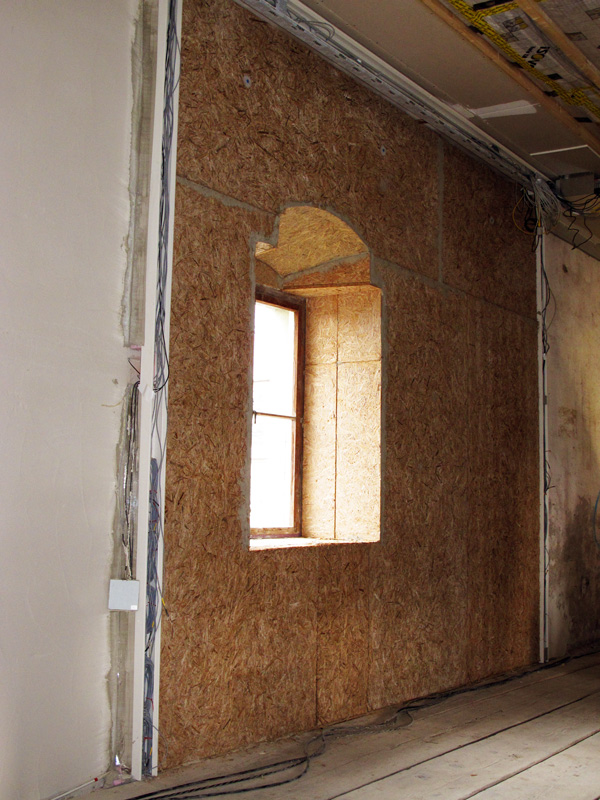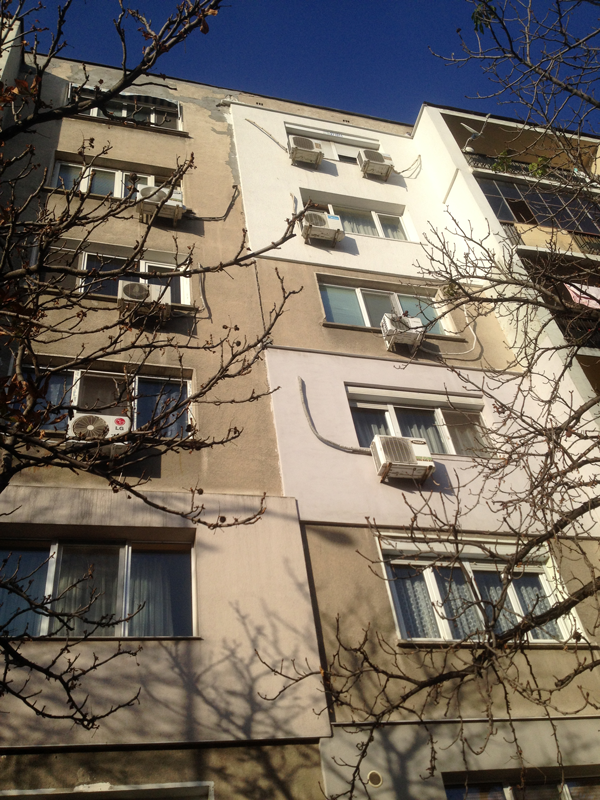Typhaboard - an innovative solution for interior insulation


In Bulgaria, as in many central and eastern European countries, a high proportion of the total living space is in the form of apartments in large, multi-story buildings. Unlike in Germany, the majority of the apartments are owned by the residents themselves. Due to the lack of agreement between the large number of parties involved, it is extremely difficult to carry out standard exterior insulation measures to improve the thermal efficiency of these buildings. Interior insulation is a suitable alternative because it can be installed without requiring a consensus of the various owners. However, interior insulation is much more complex in terms of building physics. Unsuitable materials and/or incorrect installation can easily cause serious problems such as mold growth. One possible alternative is the use of an innovative, natural building material made from cattail – Typhaboard. This is now being investigated in a project funded by the German Federal Environmental Foundation DBU.
The current DBU project centers on examining the transferability of a newly-developed, innovative, sustainable building material to thermally renovate apartment buildings with a small owner structure in Bulgaria. The raw material typha is native to large parts of Eastern Europe (including Bulgaria) and grows prolifically in some areas (e.g. along the Danube). The plants grow fast (approx. 15 t/ha of dry plant mass), particularly in areas where the water has a high nutrient concentration due to over-fertilization from conventional agricultural methods. Furthermore, they help to purify the water, reduce erosion, protect against flooding and support the formation of biotopes. The present project aims at gaining sound scientific information on the suitability of typhaboard for insulating the interior of apartments in multi-party apartment buildings in Bulgaria. To this end, knowledge from the fields of building research, agricultural sciences, social and market research and political science will be applied to the current Bulgarian multi-party building situation. This will enable a solution adapted to the conditions in Bulgaria to be developed in order to sustainably optimize and increase the value of existing buildings.
The ability to cultivate typha in Germany has already been proven in two previous projects supported by DBU (“Cultivation of cattail in fens - integration of raw material extraction, water purification to form a sustainable usage concept” AZ 10628 and "New building material for environmentally friendly and structural restoration of historical monuments" AZ 27918 (only German)). The projects also demonstrated the advantages and benefits of the building material produced from it, i.e. a load-bearing and also insulating magnesite-bonded typha panel (Typhaboard). The Fraunhofer Institute for Building Physics IBP has contributed significantly to the development and optimization of the innovative building material. Within the scope of its exemplary application in a half-timbered building in Nürnberg, the institute has addressed building physics issues and performed tests and measurements.
The current project is being carried out by the following cooperation partners:
- Fraunhofer IBP
- Fraunhofer IMW
- typha technik Naturbaustoffe
- University of Structural Engineering & Architecture (VSU) - Sofia
- Sienit Holding
Further information about Typhaboard: